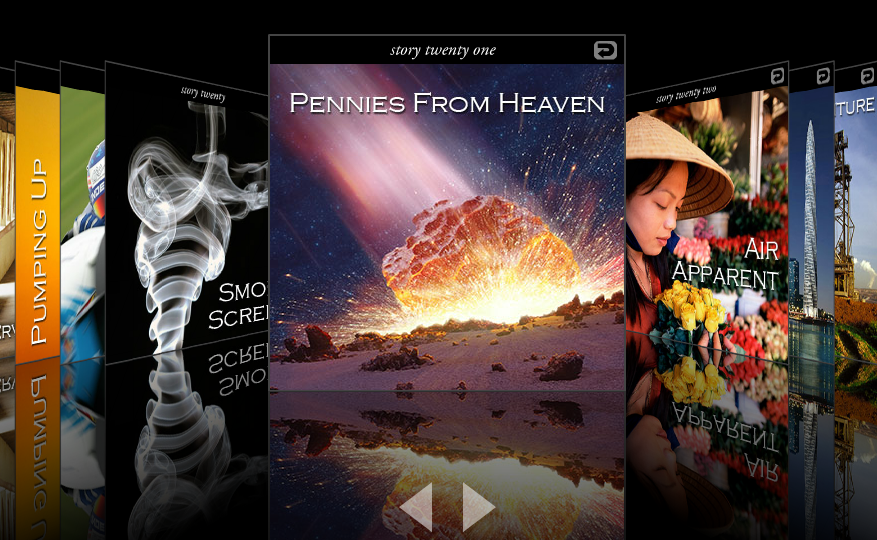 Every once in a while in your career you get to work on a dream project. One that’s challenging, rewarding and uses your talents to the utmost. But it requires a client with the guts to do something truly remarkable and the discipline to stick to it.
Every once in a while in your career you get to work on a dream project. One that’s challenging, rewarding and uses your talents to the utmost. But it requires a client with the guts to do something truly remarkable and the discipline to stick to it.
This is the tale of such a project, and the lessons we can learn from it — from tuning in to your audience to storytelling to staying focused on on your objectives.
A law firm client wanted to celebrate its 25th anniversary — normally an occasion for a vigorous round of ho-hums. But a creative partner and I pitched them on an idea that they went all in on: a slick coffee table-style book full of stories from the firm’s history.
That still sounds pretty boring, but it’s all in the execution. Because instead of using this as an opportunity to talk about the firm, as every other firm on the planet would do, we turned the spotlight outward, on their clients. It was the ultimate embodiment of show/don’t tell: just look at the amazing clients that trust us with their business. Or, to paraphrase an old advertising slogan, judge us by the company we keep.
At the heart of the project was an uncompromising editorial policy:
1. Audience first.
We wanted people to actually read this thing. So we made sure the stories were full of human interest and drama. The kind of stories that anyone — not just a chief counsel — would want to dive into. Here’s how we introduced the complex financing mechanism behind the renovation of Soldier Field:
“The multipurpose sports stadium. The very words send a chill through the spine of any serious sports fan. When baseball and football share the same home, you get poor sight lines, bizarre angles, zippered turf and a host of other problems. Most are thankfully extinct now.
The ancient Romans recognized the limits of their own mixed-use facility, the Colosseum. They stopped staging mock naval battles – which required flooding the amphitheatre’s basements and floor – in order to focus on their bread and butter: gladiator fights and wild animal hunts.
So when football legend George Halas was forced by NFL edict to move his Chicago Bears into Soldier Field in 1971, he did so grudgingly, and with the understanding that it was just a temporary solution …”
We used gentle humor and a light touch and we kept the stories short — just 400 words. And we accompanied them with bold, beautiful images that demanded attention.
2. Client second.
We did talk about the clients, of course, but not at the expense of telling a good story. Often we didn’t even get to the client until the last 100 words. Instead, we approached the story from an oblique angle, gradually guiding the reader in.
So for a waste management company we traced the history of sanitation practices from ancient Greece to medieval Europe to the 20th Century. For a mining company we recreated the moment two billion years ago when a massive asteroid smashed into the earth, leaving behind one of the world’s richest deposits of precious metals.
3. Firm third.
The firm itself got third billing. Its role in the client’s business was typically confined to a single sentence toward the end of each story. And we stuck to a strict policy: no Latin, no buzzwords, no legal citations, and not a single living lawyer was named in the whole book. That was pretty much unprecedented for law firms, which love to talk about themselves.
That simple three-part formula was critical to the book’s success. (And it was hugely successfully, generating tons of positive feedback, several awards, and even helping to win a new piece of business that ended up paying for the whole project.) But that wasn’t the secret to our success.
The Secret
What clinched it was the focus and discipline of our process.
Our “editorial board” consisted of just two of the firm’s partners, plus my creative partner and me. Every other week we would brainstorm ideas and review stories and layouts in progress.
Other lawyers in the firm got to look at and comment on select stories, but editorial control remained firmly in our hands. Even client input was weighed heavily against our Audience First ethos.
The result was a product that was pure and mostly untainted by the kind of compromises that lead to the bland, ordinary communications that dominate business.
These projects don’t come along very often, so when they do, treasure the moment. (And circle the wagons.)
